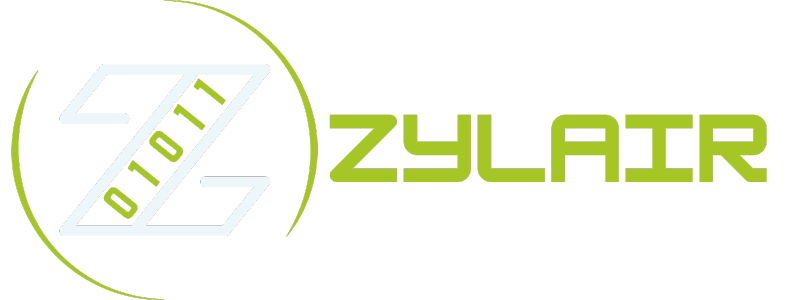Are Your EHS Reports Just Tick-Box Exercises?
When was the last time you read through one of your Environment, Health and Safety (EHS) reports and honestly felt it captured the reality of your shop floor? Let’s face it—we’ve all looked at a safety report once or twice and wondered if it was even talking about our workplace. If your reports feel detached from reality, maybe it’s time to challenge the sacred workflow of top-down safety reporting.
Early in my management career, I relied heavily on supervisors and experts away from daily operations to draft our safety documents and EHS reports. On the surface, it made sense. These folks were trained specifically to look for hazards, after all. But a blunt realisation woke me up one morning: The people directly managing risks on the floor—the operators, technicians, and line managers—had become merely passive recipients of a safety narrative they hadn’t shaped. And unsurprisingly, they felt disconnected from it.
This became evident to me one memorable day during an audit. When asked about clarity around a particular safety procedure from our latest reports, one of our operators honestly replied, “I couldn’t tell you—never read it. Probably written up in the offices, I reckon.” Fair enough—why would they engage deeply if the reports didn’t reflect their experiences? That simple moment was a wake-up call: Without employee engagement, your safety practices might as well live in dreamland.
The Mistake Most Teams Keep Repeating (And the Hidden Cost)
The conventional workflow for creating EHS reports typically follows a predictable path: senior management and safety specialists assess risks, outline guidance, then delegate actions down the ladder. Operational teams and shop-floor staff are left to implement the changes without being sufficiently involved in creating the safety narrative they’re expected to embody.
I’ve been there myself, guided initially by a mistaken belief that too many inputs would slow things down or muddy the clarity of reporting. But here’s the hard truth I learned the tough way: Keeping frontline employees out of the reporting loop means ignoring essential, practical knowledge. Worse still, this exclusion breeds cynicism about safety reporting itself.
Let’s break down the damage. First, reports written primarily by off-floor teams tend to employ generic templates. These tick-box exercises might sound impressive in management audits, but they rarely highlight real practical issues or opportunities for improvement specific to your plant floor.
Secondly, this disconnect creates a silent risk—workers disengaged from safety procedures or reluctant to flag genuine issues because of doubt concerning action or follow-up. Put bluntly, ignoring on-floor insights doesn’t just cost efficiency—it can directly impact safety posture in a tangible and negative way.
A Better Way: Empowering Those Closest to the Hazard
So, real talk—how did we address this? Admitting the problem was the first step. Once we understood the disconnect, we started breaking down the old, bureaucratic boundaries. We restructured our EHS reporting process from the ground up, intentionally putting operators and frontline supervisors squarely at the heart of safety discussions and the authorship of reports.
Initially, it seemed risky to shift responsibility this way, sparking fears of inconsistencies, quality issues, or resistance. But what happened next surprised even me, a seasoned skeptic by nature.
Armed with user-friendly digital safety report automation tools, our shop floor workers began capturing details, observations, and near misses in real time, faster and more accurately than ever. No more writing scraps on crumpled paper. No more waiting until the end of shifts to recall issues, reducing valuable detail to vague bullet points. Digital EHS automation meant their inputs immediately became part of the shared conversation and shaped actions faster.
Slowly and mindfully, we built processes around their feedback rather than imposing top-down safety procedures onto them. We asked them openly, “What’s working, what’s not—and what do you think?”. And guess what? They told us explicitly. They shared details about machines needing better guarding, procedures that slowed them down, and even highlighted habit-formed workarounds no one had clocked before.
Instead of bureaucratic confusion, this mindset promoted clarity, ownership, and a genuine safety-first mentality. Workers weren’t passively receiving safety mandates—for the first time in a long while—they became architects building the safety culture themselves, sharing responsibility and pride in safety outcomes.
Measuring the Real Impact: Faster Reports, Stronger Audits, Safer Floors
But talk alone isn’t proof—results matter. And I wouldn’t ask you to just trust me blindly on this. When we shifted responsibility for EHS reports closer to the operational teams, tangible benefits emerged quickly.
In terms of reporting speed alone, automated frontline reporting cut delays dramatically. Suddenly, insights that previously took days or even weeks to circulate could be available within minutes. Safety report automation tools integrated easily into our existing manufacturing software, meaning we could react faster, investigate better, and allocate resources more effectively.
Auditing days shifted from nerve-wracking to confidence-boosting events. Our team could clearly articulate procedures and hazards because they wrote them. Auditors regularly remarked on how grounded and practical our safety insights became—no vague platitudes; just spot-on guidance reflecting shop-floor realities.
And of course—most important—our safety metrics improved measurably. Lost-time incidents dropped because the reports now called out genuine frontline risks proactively, not reactively. Greater visibility of hazards led to quicker, smarter interventions. People took pride in fixing issues they personally had flagged because they felt true ownership.
The ripple effect of putting reporting power firmly in the hands of those closest to the hazards has been eye-opening, a real improvement in empowerment, communication, and most importantly, genuine safety improvements. It transformed our approach from a generic, compliance-driven EHS box-ticking exercise into a thriving workplace safety culture enriched by genuine care and practical knowledge.
So next time you’re glancing at a freshly printed EHS report, ask yourself honestly—is this a genuine voice of your frontline team? Perhaps it’s time to reconsider who’s holding the pen and drive safety from the floor up.




